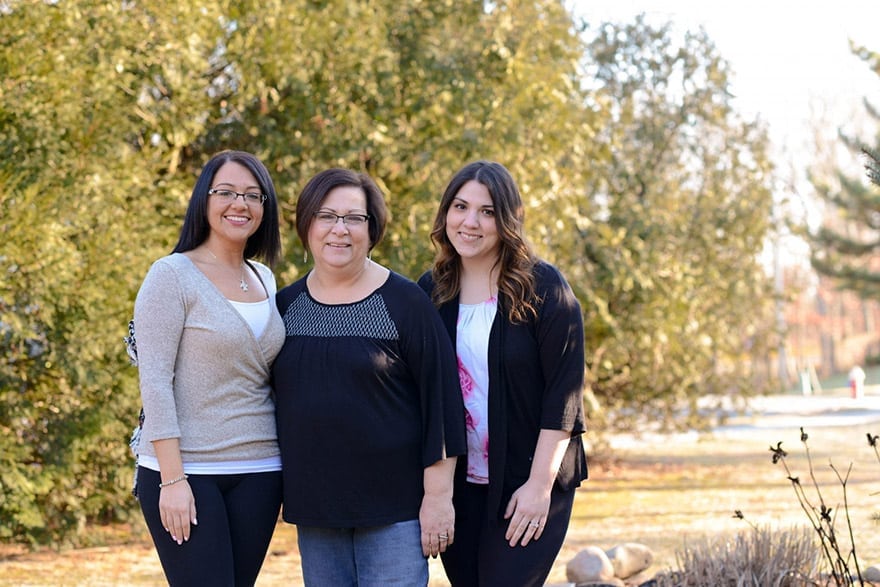Robotic Surgery Heals a Heart

June 08, 2018
Howell woman’s blocked artery is fixed with a minimally invasive robotic procedure.
Early one September morning, as she got ready for work, Nancy Loprete, 62, felt unsteady and couldn’t quite get her balance. “As I walked down the hallway, it felt like I was walking on a cruise ship,” she says. “As soon as I got in my car, I knew I was in no condition to drive.” From her car, Nancy sent a text message to her daughters, Amanda and Jill, along with her husband, Patrick, asking that someone drive her to the Emergency Department at Jersey Shore University Medical Center.
Taking A Closer Look
At the hospital, Nancy first had an electrocardiogram (EKG), which records the activity of the heart, followed by an MRI and several chest X-rays. Her EKG results revealed that Nancy would need a cardiac catheterization to determine how well her heart was functioning. Ravi Diwan, M.D, a cardiologist at Jersey Shore, placed a thin tube into the blood vessels that lead to the heart to determine if Nancy’s heart muscles, valves or arteries were diseased. Nancy’s left anterior descending (LAD) artery had a 100 percent blockage, which was too severe for a stent. The only option was a surgical procedure called coronary artery bypass grafting, or CABG, which helps to improve blood flow to the heart by removing plaque buildup in the coronary arteries.
Innovation Made Easy
Nancy was referred to Kourosh Asgarian, D.O., a cardiothoracic surgeon with Jersey Shore. “When I met Dr. Asgarian, I felt at ease,” says Nancy. “He was friendly and explained every step along the way. My initial thought was, ‘Robots are going to do this?’ but Dr. Asgarian explained that he is in control of it, and that this surgery would be less invasive than a traditional sternotomy.” “I was excited to be able to help Nancy with a minimally invasive solution to her heart problem. When I first examined Nancy’s test results, I thought she would be a great candidate for robotic surgery,” says Dr. Asgarian. “She only spent a few days in the hospital and I’m very pleased with how she’s recovering.” Robotic CABG requires four 1-inch incisions in the chest and under the arm, whereas a traditional sternotomy CABG procedure involves making a long incision along the breastbone and then dividing the breastbone to access the chest. The traditional approach requires months of rest and healing, whereas the robotic approach allows the patient to heal faster, with less pain and a reduced chance for infection. “I am so glad that Dr. Asgarian was able to perform this procedure robotically,” says Nancy.
Find a doctor near me
After Mitral Valve Repair Three Years Ago, Where is She Now?

Mitral valve repair success story. Emer's full life after surgery at Mountainside Medical Center. Learn how she thrives. Schedule your appointment today.
After Experiencing an Aortic Aneurysm, Where is He Now?

Aortic aneurysm survivor Thomas Redmond shares his recovery journey and advice. Learn how he maintains his health and find a primary care physician.
Find a doctor near me

Life After Bypass
Life After Bypass: Jeffrey Wells shares his recovery story. Learn about his experience and resources for heart health. Call 800-822-8905.

On the Move Again After Bypass Surgery
Bypass surgery recovery story. Learn how Carlos from Rumson, NJ, resumed his active life after heart surgery. Find hope and resources. Call 800-822-8905.

The Little Engine That Could: Impella® Device
Impella® Device: Ron Rovito's heart failure recovery story. Learn how the Impella device helped. Call 800-822-8905 for care.
Recipe for a Healthy Heart
Heart attack survival guide. Learn how Impella device helped Alfredo recover from a near-fatal heart attack. Discover Jersey Shore University Medical Center's cardiac care.
